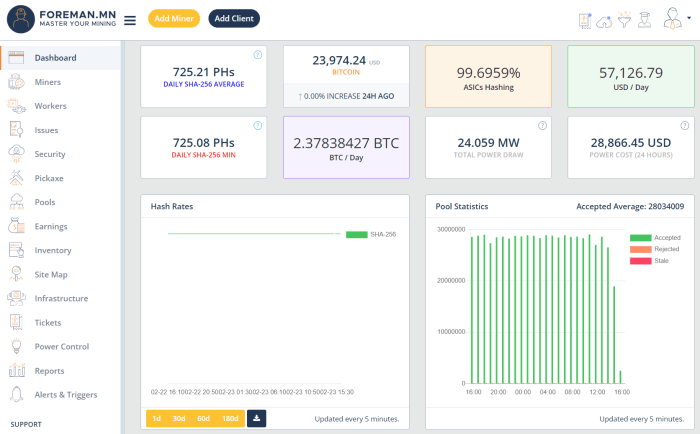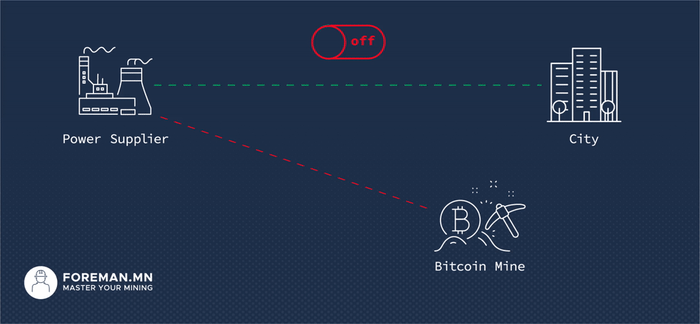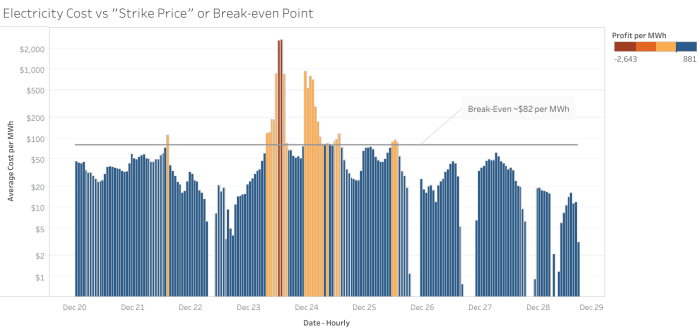Power Bitcoin Mining Management Software – Bitcoin Magazine

This is an opinion editorial by Mitch Klee, analyst at mining platform Foreman.
After China banned bitcoin mining in May 2021, nearly 75% of the global hash rate was dispersed and moved to other countries such as Kazakhstan, Russia, the United States, and Canada. Since the seemingly devastating mining ban gripped mining in China almost two years ago, the Bitcoin mining landscape has changed dramatically. Remarkably, the hashrate has continued to grow and currently stands at around 320 exahashes per second (EH/s), with the US alone estimated to account for nearly 37% of all hashrates.
This hyper-competitive growth has caused miners to seek more efficient ways to manage their operations at scale, with mining software as an important part of their strategy.
Using Bitcoin Mining Management Software
Management software is changing the landscape of Bitcoin mining by allowing miners to manage their site efficiently while saving costs and responding to demand on the energy grid.
Mining software is a way to organize and coordinate miners on a large scale. Booting up, configuring, and programming each ASIC is daunting, involving multiple steps such as establishing pool connections, completing firmware updates, managing power control, and diagnosing problematic hash cards. This installation process can be incredibly difficult when you’re not using the right software. However, with effective mining software, users can easily manage their mines, ensuring optimal performance and productivity.
The programmable nature of this software allows users to take control of various processes through conditional statements. For example, if the ASIC temperature reaches a certain threshold, it can activate sleep mode, or if the power price exceeds a certain threshold, it can limit mining. The dynamic nature of the software allows users to control exactly how they want to set up their mine. Moreover, the dynamic nature of the mining software unlocks powerful features such as managing the power grid and initiating demand response, providing users with a comprehensive solution to optimize their mining operations.
The importance of demand response
Demand response is the action of electricity consumers responding to an increase in demand for a specific amount of electricity on the grid. In a previous article, I expanded on Bitcoin miners’ unique influence through Demand response, which I recommend reading to learn more about how this relationship works. In short, Bitcoin miners can respond to network signals faster and at a larger scale than any other industry consumer can, without significantly hindering their profit margins.
Mining plants straddle global energy markets, both on-grid and off-grid, finding every opportunity for energy arbitrage. Similar to the properties of water, Bitcoin miners will follow and flow into the lowest energy sources, consuming excess energy when needed. The flip side is that mining software allows miners to respond to an increase in demand immediately, reducing operating costs and increasing the bottom line. This flexibility enabled by the software allows miners to continuously optimize their operations, participate in unique online service programs and stay ahead of the competition.
An example is the redemption price. When production costs exceed revenues, miners should shut down and management software activates this automatic trigger.
Mining software allows users to automatically and programmatically respond to high demand for electricity through the strike price mechanism. Combine that with demand response programs and miners are now lowering their overall costs and getting paid to shut down the energy company’s demand response programs.
This programmatic response to increased demand adds an operating system to the century-old grid, with large flexible loads that respond in real time at scale. Spread this to grids around the world and Bitcoin mining has just created an equilibrium responsive mechanism to keep the grid balance in check. By financing excess production, you can keep the lights on at scale while reducing overall electricity costs to the grid.
In the long run, bitcoin mining is a race to zero. The competition is chasing ever lower spreads, looking for stranded and excess electricity, moving closer to the power producers and eliminating all excess costs. It’s hard to say what the future holds for large-scale Bitcoin mining. Still, software-enabled administration over sites is becoming non-negotiable for miners as the competition for more hash rate and lower power costs increases.
This is a guest post by Mitch Klee. Opinions expressed are entirely their own and do not necessarily reflect the opinions of BTC Inc or Bitcoin Magazine.





